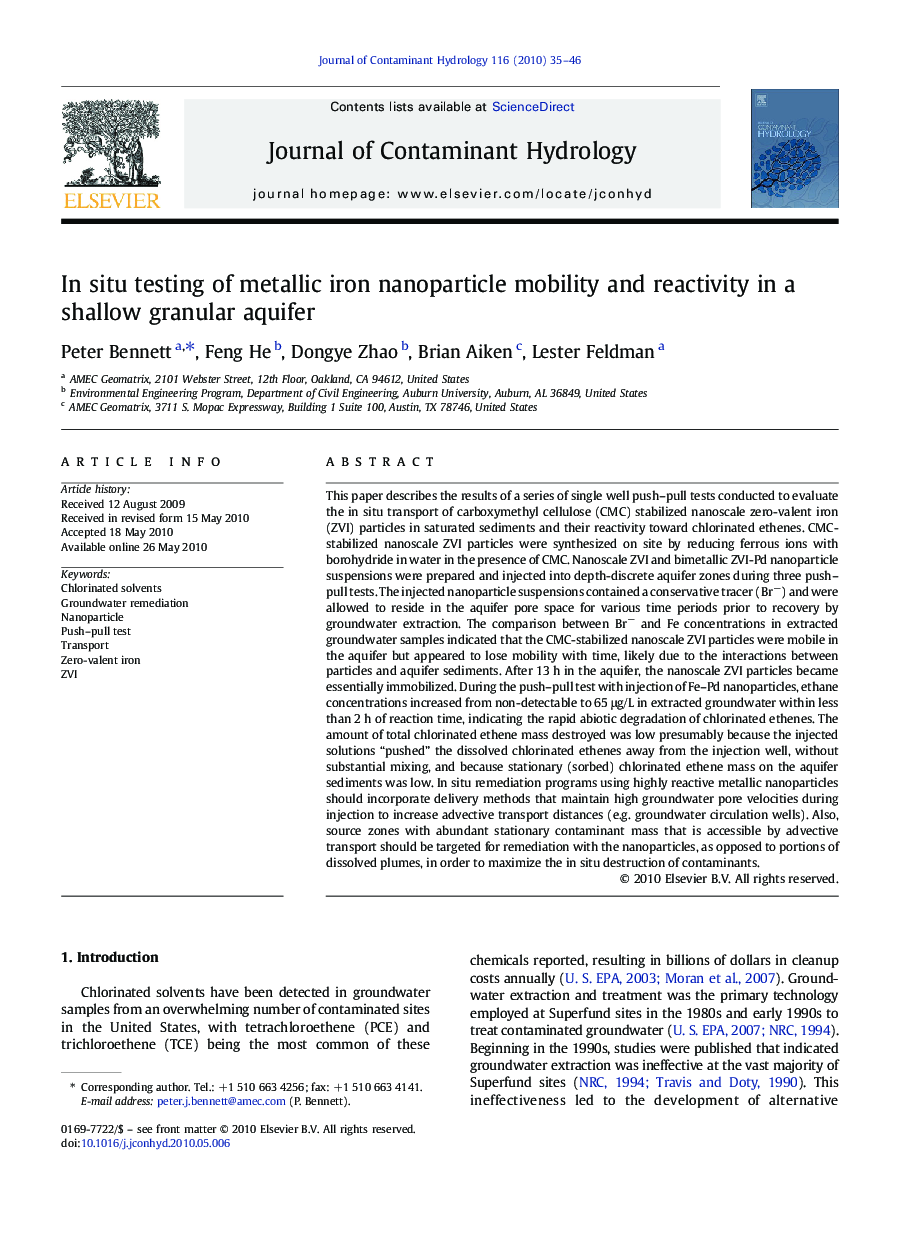| کد مقاله | کد نشریه | سال انتشار | مقاله انگلیسی | نسخه تمام متن |
|---|---|---|---|---|
| 4547044 | 1627086 | 2010 | 12 صفحه PDF | دانلود رایگان |

This paper describes the results of a series of single well push–pull tests conducted to evaluate the in situ transport of carboxymethyl cellulose (CMC) stabilized nanoscale zero-valent iron (ZVI) particles in saturated sediments and their reactivity toward chlorinated ethenes. CMC-stabilized nanoscale ZVI particles were synthesized on site by reducing ferrous ions with borohydride in water in the presence of CMC. Nanoscale ZVI and bimetallic ZVI-Pd nanoparticle suspensions were prepared and injected into depth-discrete aquifer zones during three push–pull tests. The injected nanoparticle suspensions contained a conservative tracer (Br−) and were allowed to reside in the aquifer pore space for various time periods prior to recovery by groundwater extraction. The comparison between Br− and Fe concentrations in extracted groundwater samples indicated that the CMC-stabilized nanoscale ZVI particles were mobile in the aquifer but appeared to lose mobility with time, likely due to the interactions between particles and aquifer sediments. After 13 h in the aquifer, the nanoscale ZVI particles became essentially immobilized. During the push–pull test with injection of Fe–Pd nanoparticles, ethane concentrations increased from non-detectable to 65 μg/L in extracted groundwater within less than 2 h of reaction time, indicating the rapid abiotic degradation of chlorinated ethenes. The amount of total chlorinated ethene mass destroyed was low presumably because the injected solutions “pushed” the dissolved chlorinated ethenes away from the injection well, without substantial mixing, and because stationary (sorbed) chlorinated ethene mass on the aquifer sediments was low. In situ remediation programs using highly reactive metallic nanoparticles should incorporate delivery methods that maintain high groundwater pore velocities during injection to increase advective transport distances (e.g. groundwater circulation wells). Also, source zones with abundant stationary contaminant mass that is accessible by advective transport should be targeted for remediation with the nanoparticles, as opposed to portions of dissolved plumes, in order to maximize the in situ destruction of contaminants.
Journal: Journal of Contaminant Hydrology - Volume 116, Issues 1–4, 30 July 2010, Pages 35–46